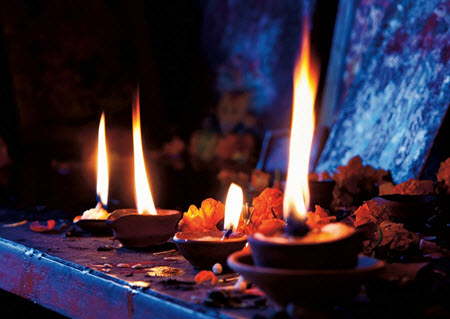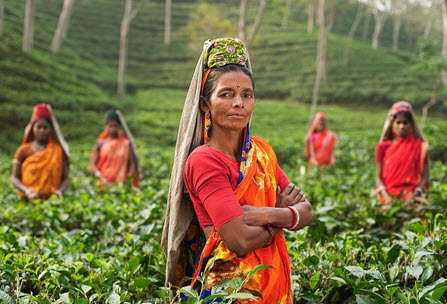Contents
Siddha medicine is a system of ancient traditional medicine developed by the ancient Tamil people of southern India.
History
 The name is derived from the siddhars, spiritual adepts who according to this belief system possessed eight supernatural powers known as the ashta siddhis. According to legend, the siddhars laid the foundation for the siddha medicine system, basing it on a system described by Lord Shiva to his wife Parvati, who in turn taught her son Lord Muruga. Lord Muruga then taught his disciple Agasthya, who taught the 18 siddhars that wrote down the knowledge on palm leaf manuscripts.
The name is derived from the siddhars, spiritual adepts who according to this belief system possessed eight supernatural powers known as the ashta siddhis. According to legend, the siddhars laid the foundation for the siddha medicine system, basing it on a system described by Lord Shiva to his wife Parvati, who in turn taught her son Lord Muruga. Lord Muruga then taught his disciple Agasthya, who taught the 18 siddhars that wrote down the knowledge on palm leaf manuscripts.
Many old palm leaf manuscripts containing information about siddha medicine exist in South India, but instead of being kept as a single compilation they are spread out over various Indian families.
Basics
The seven elements
The seven bodily elements in Siddha medicine:
| Name | Translation | Info | |
| 1 | Ooneer | Plasma | Responsible for growth, development and nourishment. |
| 2 | Cheneer | Blood | Responsible for nourishing muscles, improving intellect and imparting color. |
| 3 | Oon | Muscle | Responsible for the shape of the body. |
| 4 | Koluppu | Fatty tissue | Responsible for oil balance and for keeping the joints lubricated. |
| 5 | Elumbu | Bone | Responsible for body structure, posture and movement. |
| 6 | Elumbu mijai | Bone marrow | Responsible for the formation of blood corpuscles. |
| 7 | Sukkilam | Semen | Responsible for reproduction. |
According to Siddha elements, various bodily functions depend on the combination of these elements.
The physiology components
The physiological components of a human according to Siddha medicine:
- Vaadham (air)
- Pittham (fire)
- Kapam (earth and water)
According to Siddha medicine, disease occurs when the normal balance between vaddham, pittham and kapam is disturbed. Many different factors can cause such disturbances, including diet, physical activities, stress, and weather.
Relationship with Ayurveda
Many of the basic concept of Siddha medicine are also found in Ayurveda. A notable difference is that according to Siddha, Vaadham is dominant in childhood, Pittham in adulthood and Kapam in old age. In Ayurveda, childhood is dominated by Kapam, adulthood by Pittham and old age by Vaatham.
Examination
When a Siddha medicine practitioner examines a patient, special attention will be paid to the following.
| Name | Translation | Info | |
| 1 | Na | Tongue | Black in vaatham
Yellow or red in pitham White in kapam Ulcerated indicates anaemia |
| 2 | Varnam | Color | Dark in vaatham
Yellow or red in pitham Pale in kapam |
| 3 | Kural | Voice | Normal in vaatham
High-pitched in pitham Low-pitched in kapam Slurred indicates alcoholism |
| 4 | Kan | Eyes | Muddy conjuctiva in vaatham
Red or yellowish in pitham Pale in kapam |
| 5 | Thodal | Touch (skin) | Dry in vaatham
Warm in pitham Chill in kapam |
| 6 | Malam | Feces | Black in vaatham
Yellow in pitham Pale in kapam Dark red indicates ulcer Shiny indicates terminal illness |
| 7 | Neer | Urine
(First urine in the morning is examined) |
Straw color indicates digestive problems
Reddish-yellow indicates excessive heat Rose indicates blood pressure issues Saffron color indicates jaundice Meat-washed water color indicates renal disease |
| 8 | Naadi | Pulse
(Recorded on the radial artery) |
Treatments
This medical system includes a wide range of treatments. They are divided into three groups: devamaruthuvum (divine method), manuda maruthuvum (rational method) and asura maruthuvum (surgical method).
Here are a few examples:
- Parpam (drug, belongs to divine method group)
- Kuligai of mercury, sulphur and pashanams (drug, belongs to the divine method group)
- Chendooram (drug, belongs to the divine method group)
- Churanam (herb, belongs to the rational method)
- Vadagam (herb, belongs to the rational method)
- Kudineer (herb, belongs to the rational method)
- Blood-letting (belongs o the surgical method)
- Leech application (belongs o the surgical method)
- Incision (belongs o the surgical method)
- Excision (the partial removal of an organ, tissue, bone or tumor from a body, belongs to the surgical method)
- Heat application (belongs o the surgical method)
- Steam therapy
- Fasting
- Emetic therapy
- Purgative therapy
- External oiling of the body
- Internal oiling of the body
- Solar therapy
- Physical therapy
- Yoga
Drugs
The Siddha medical system utilizes both internal and external drugs. The internal drugs are typically administered orally. The external drug group includes products such as eye drops, ear drops and nasal drops.
Some medicines are highly complex and contain over 250 different ingredients.
Siddha drugs can be arranged into three different categories:
| Name | Info |
| Thavaram | Herbal products |
| Jangamam | Animal products |
| Thadhu | Inorganic substances |
All the drugs are classified based on five properties:
- Suvai (taste)
- Gunam (character)
- Veeryam (potency)
- Pirivu (class)
- Mahimai (action)
Training
The traditional route to become a practitioner of siddha medicine is to be trained by a guru.
Today, there is also a 5.5 year long program run by the Tamil Nadu state that ends in a BSMS: Bachelor in Siddha Medicine and Surgery.
On the governmental level, medical colleges and research centers for Siddha has been created, such as the National Institute of Siddha and the Central Council for Resarch in Siddha.
In India, higher education in areas of Indian traditional medicine, including Siddha, is monitored by a statutory body named The Central Council of Indian Medicine (CCIM). CCIM is a part of the government’s Ministry of Health and Family Welfare.
Research
Siddha medicine research is coordinated and promoted by The Ministry of Ayurveda, Yoga and Naturopathy, Unani, Siddha and Homeopathy of the Government of India.
World Siddha Day
The first World Siddha Day was celebrated on 14 April 2009.
